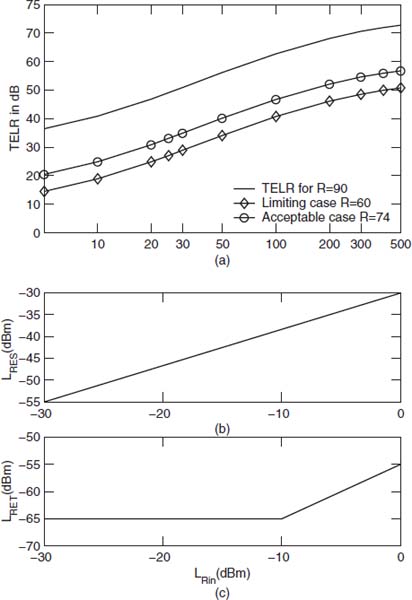6.4 TALKER ECHO LEVELS AND DELAY
This section is mainly relevant for line echo cancellation. The talker echo loudness rating and the delay relation are shown in Fig. 6.4 in relation to G.131 [ITU-T-G.131 (2003)] and G.107 [ITU-T-G.107 (2005)] recommendations. In PSTN, delays are lower than VoIP, and TELR requirements will be lower even for inter-regional calls. Several examples of delay and TELR combinations are given in G.131. Some of these examples with echo cancellation requirements are given in Table 6.2(a). The first four rows of the table are for without the echo canceller, marked as a “None” improvement under the echo canceller. The last five rows are with the echo canceller operation. For the delays of 150, 200, 300, and 500 ms, the corresponding TELR and the echo canceller enhancement are given in Table 6.2.

Figure 6.4. TELR in relation to ITU-T-G.131 and echo cancellation requirements as per ITU-T-G.168. (a) G.131 TELR graph for limiting, acceptable, and for R-factor 90. (b) G.168 linear part echo cancellation. © G.168 linear and nonlinear part of echo cancellation. [Courtesy: Reproduced with the kind permission of ITU; International Telecommunication Union, Geneva, www.itu.int).]
In relating TELR from G.131 with G.107 R-factor, the TELR limiting and acceptable cases are given in G.131 as first-level considerations. The limiting case is the echo level for which 10% of ...
Get VoIP Voice and Fax Signal Processing now with the O’Reilly learning platform.
O’Reilly members experience books, live events, courses curated by job role, and more from O’Reilly and nearly 200 top publishers.

